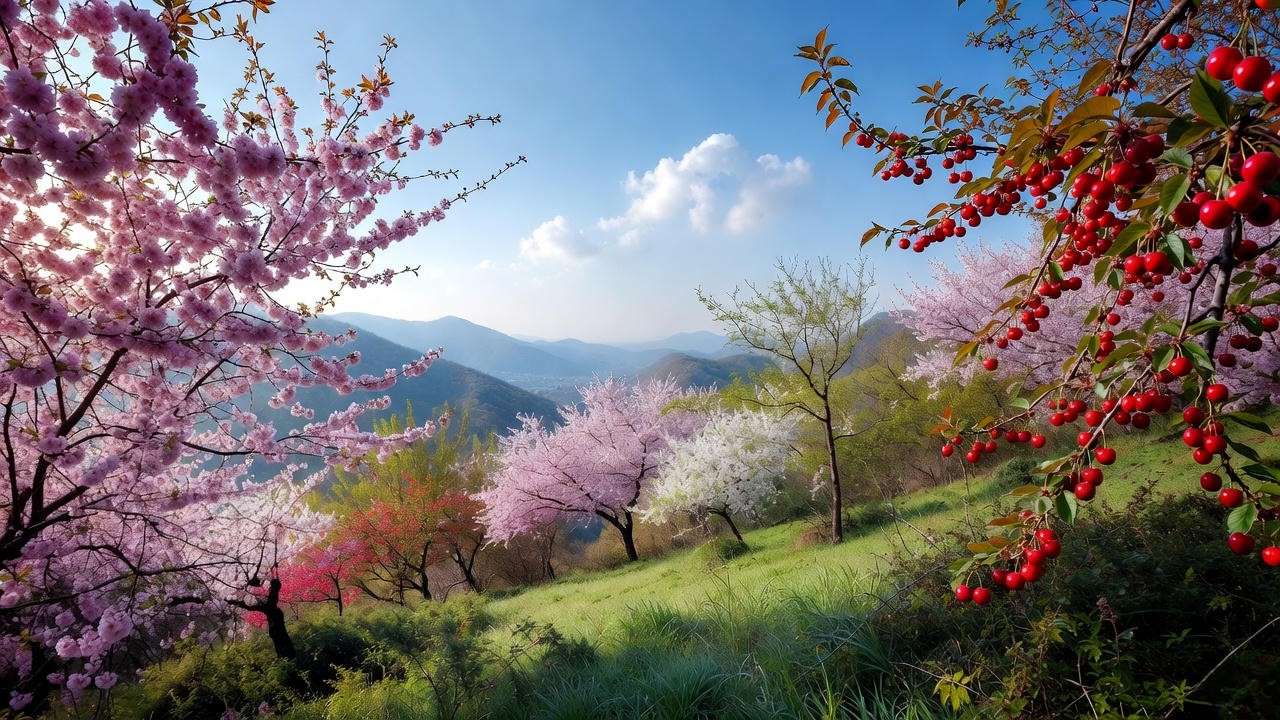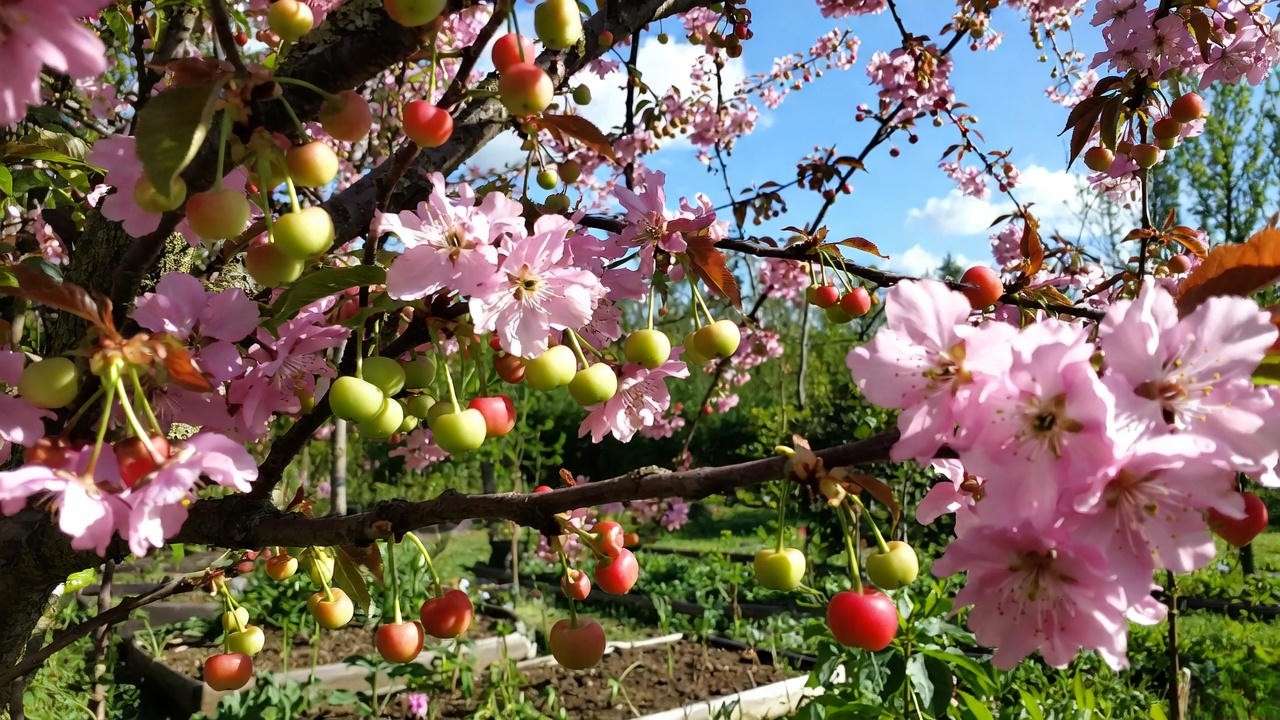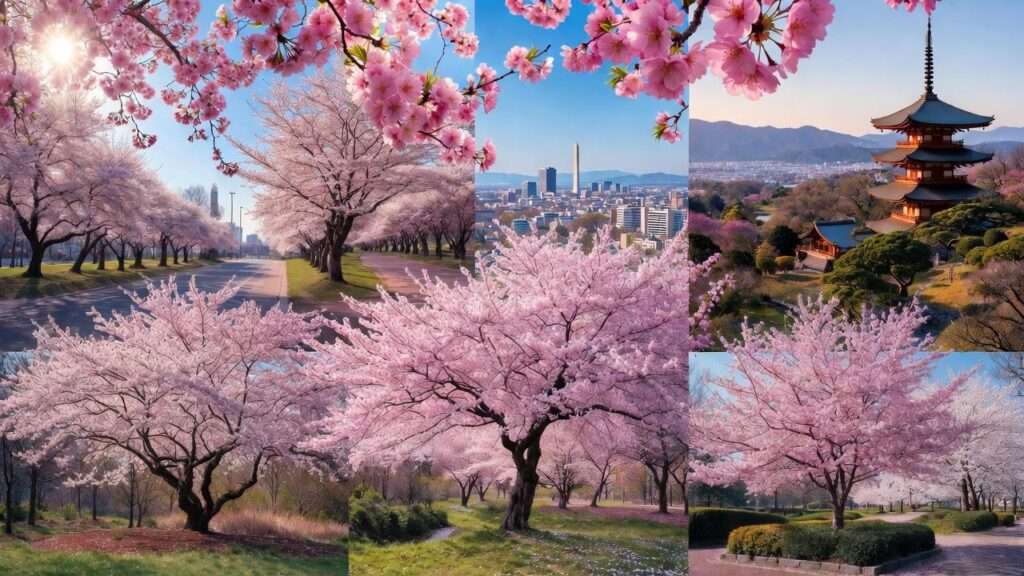Introduction: Discover the Magic of Cherry Trees 🌳
Picture yourself wandering through a sun-dappled orchard, where cherry trees burst with delicate pink blossoms or dangle with ruby-red fruit. This enchanting vision sparks a question: where do cherry trees grow to create such beauty? Whether you’re a gardener dreaming of vibrant spring blooms or a homeowner eager to harvest homegrown cherries, understanding the ideal regions and conditions for cherry trees is the key to success. In this comprehensive guide, we’ll explore the best places worldwide for cherry tree growth, unpack their climate and soil needs, and share expert tips to help you cultivate thriving trees. Backed by horticultural insights and real-world examples, this article will empower you to bring the magic of cherry trees to your own backyard. 🌺
Understanding Cherry Trees: A Brief Overview 🌸
What Are Cherry Trees? 🍒
Cherry trees, belonging to the Prunus genus, are beloved for their stunning spring blossoms and juicy fruit. They come in two main types: ornamental varieties, like the Yoshino and Kwanzan, prized for their floral displays, and fruit-bearing varieties, such as Bing and Rainier, grown for their delicious cherries. According to botanical surveys, over 1.5 million cherry trees are planted globally for ornamental purposes, transforming landscapes from Japan’s ancient gardens to modern urban parks. Their cultural significance is profound—Japan’s hanami festivals celebrate cherry blossoms as symbols of renewal, while Washington, D.C.’s Tidal Basin draws millions to its cherry-lined shores each spring.
Cherry trees aren’t just beautiful; they’re a rewarding addition to any garden. However, their success hinges on planting them in the right location, which brings us to the heart of this guide. 🌿

Why Location Matters for Cherry Trees 📍
The question of where do cherry trees grow isn’t just about geography—it’s about matching the tree’s needs to the environment. Climate, soil, and sunlight play critical roles in ensuring healthy growth, vibrant blooms, or bountiful fruit. A poorly chosen location can lead to weak trees, sparse blossoms, or failed harvests. For example, a fruit-bearing cherry tree planted in a frost-prone area may never produce, while an ornamental variety in heavy clay soil could succumb to root rot. “Location is the foundation of cherry tree success,” says Dr. Emily Harper, a horticulturist with 20 years of experience. “Understanding your region’s climate and soil is non-negotiable.” Let’s dive into the best regions for cherry trees worldwide. 🗺️
Where Do Cherry Trees Grow? Best Regions Worldwide 🌍
North America: Prime Cherry Tree Regions 🇺🇸🇨🇦
In North America, cherry trees thrive in temperate climates, particularly USDA Hardiness Zones 5-8. The United States is a powerhouse for both fruit and ornamental cherries. The Pacific Northwest, especially Washington’s Yakima Valley, produces 40% of U.S. cherries, thanks to its mild summers and well-drained soils (source: USDA). Michigan’s Traverse City, dubbed the “Cherry Capital of the World,” grows 70% of the nation’s tart cherries, flourishing in Zone 5’s chilly winters. For ornamental cherries, Washington, D.C.’s Tidal Basin showcases Yoshino trees in Zone 7, creating a springtime spectacle that attracts 1.5 million visitors annually.
In Canada, British Columbia’s Okanagan Valley is ideal for fruit cherries, with its long growing season and fertile soils. To find your region’s suitability, check your USDA Zone using the interactive map on the USDA website. If you’re in Zones 5-8, you’re in cherry tree territory! 🌞

Asia: The Heart of Cherry Blossom Culture 🇯🇵🇰🇷
Asia, particularly Japan, is synonymous with cherry blossoms, or sakura. Japan’s cherry trees thrive in climates equivalent to Zones 5-9, from Hokkaido’s cooler north to Kyoto’s temperate heart. Tokyo’s Ueno Park, with over 800 cherry trees, draws crowds during hanami, a tradition celebrating fleeting beauty. Japan’s cherry blossom tourism generates $1 billion annually, with 63 million visitors flocking to festivals (source: Japan Tourism Agency). South Korea’s Jinhae Cherry Blossom Festival, featuring 360,000 trees, is another must-see, thriving in similar climates.
For gardeners inspired by Asia’s displays, mimic Japan’s loamy, well-drained soils and ensure 6-8 hours of sunlight. Ornamental varieties like Kwanzan or Okame are perfect for recreating that sakura magic at home. 🌸
Europe: Cherry Orchards and Blossoms 🇬🇧🇩🇪
Europe boasts thriving cherry tree regions, particularly in Zones 6-8. In the United Kingdom, Kent and Sussex are known for fruit cherries, while London’s Kew Gardens showcases ornamental varieties. Germany’s Bonn, with its famous “Cherry Blossom Avenue,” transforms into a pink tunnel each spring, thanks to Zone 7’s mild climate. European growers often use microclimate strategies, like planting near south-facing walls, to shield trees from late frosts—a tip worth adopting.
Whether you’re after fruit or flowers, Europe’s success shows that cherry trees adapt well to temperate regions with proper care. 🌳
Other Regions: Australia, South America, and Beyond 🦘🌎
Cherry trees also flourish in the Southern Hemisphere. In Australia, Tasmania and Victoria (equivalent to Zones 9-10) produce sweet cherries, with cool winters meeting chilling requirements. Chile’s Maule Region has become a global cherry exporter, leveraging its Mediterranean-like climate. Southern Hemisphere growers adjust planting to reverse seasons—fall planting for spring blooms. If you’re in a similar climate, low-chill varieties like Lapins can thrive with minimal winter cold. 🌏
Climate and Environmental Needs for Cherry Trees ☀️🌧️
Temperature and Hardiness Zones ❄️
Cherry trees are picky about temperature. Most varieties require 700-1,000 chilling hours (below 45°F) to set fruit, though ornamental types are less demanding. They thrive in Zones 5-8, where winters dip to 20°F but avoid extreme cold. Late spring frosts are a common pitfall—trees in Zone 4 or below may lose buds to unexpected freezes. For example, Bing cherries need 900 chilling hours, while Stella requires only 600, making it better for milder climates.
| Variety | Chilling Hours | Best Zones |
|---|---|---|
| Bing (Fruit) | 900 | 5-7 |
| Stella (Fruit) | 600 | 5-8 |
| Yoshino (Orn.) | 400-500 | 5-9 |
| Kwanzan (Orn.) | 400-500 | 5-9 |
Check your local chilling hours using university extension resources to pick the right variety. 🌡️
Soil and Drainage Requirements 🏞️
Cherry trees demand well-drained, loamy soil with a pH of 6.0-7.0. Heavy clay soils spell trouble, as they trap water and cause root rot. “Good drainage is non-negotiable,” says master gardener Sarah Lin. “Test your soil before planting.” Amend clay with compost or sand, or opt for raised beds. Home pH kits, available at garden centers, ensure your soil is in the sweet spot. For extra assurance, send a sample to your local extension service for analysis. 🌱

Sunlight and Watering Needs 🌞💧
Cherry trees crave 6-8 hours of direct sunlight daily to fuel blooms and fruit. Partial shade weakens growth and reduces yields. Watering is equally critical—provide 1-2 inches per week, adjusting for rainfall. Overwatering leads to blossom drop, so use a rain gauge to stay precise. “Balance is key,” notes Lin. “Too much water is as harmful as too little.” Mulch with wood chips to retain moisture and keep roots cool, especially in warmer climates. 💧
Tips for Growing Cherry Trees in Your Region 🛠️
Choosing the Right Cherry Tree Variety 🌱
Selecting the right variety is half the battle. For cold climates (Zone 5), try Montmorency for tart cherries or Yoshino for blossoms. In warmer Zones 8-9, low-chill varieties like Minnie Royal or Kwanzan shine. Here’s a quick guide:
- Montmorency (Fruit): Tart, great for pies; Zone 5; 800 chilling hours.
- Bing (Fruit): Sweet, juicy; Zones 5-7; 900 chilling hours.
- Yoshino (Orn.): Classic white blossoms; Zones 5-9; 400-500 chilling hours.
- Kwanzan (Orn.): Double pink flowers; Zones 5-9; 400-500 chilling hours.
- Stella (Fruit): Self-pollinating, compact; Zones 5-8; 600 chilling hours.
Check with local nurseries for region-specific recommendations. Self-pollinating varieties like Stella are ideal for small gardens. 🌿
Planting and Care Best Practices 🌳
Planting sets the stage for success. Follow these steps:
- Site Selection: Choose a sunny, well-drained spot with good air circulation.
- Planting: Dig a hole twice the root ball’s width, plant in fall or early spring, and keep the graft union 2 inches above soil.
- Mulching: Apply 2-3 inches of organic mulch, keeping it 6 inches from the trunk.
- Staking: Support young trees in windy areas.
Care tips:
- Pruning: Prune in late winter to remove dead wood and shape the canopy. Avoid heavy cuts on young trees.
- Fertilizing: Apply a balanced 10-10-10 fertilizer in spring.
- Monitoring: Watch for signs of stress, like yellowing leaves.

Overcoming Regional Challenges ⚠️
Every region has hurdles. In cold climates, protect buds with frost blankets or plant near windbreaks. In warm zones, choose low-chill varieties and provide afternoon shade. Pests like aphids and cherry fruit flies are common—use neem oil or introduce beneficial insects like ladybugs. For clay soils, raised beds are a game-changer. “Adapt to your environment,” advises Dr. Harper. “Cherry trees are resilient with the right tweaks.” 🐞
Inspiring Examples: Cherry Trees Around the World 🌏
Case Study 1: Japan’s Ueno Park 🌸
Tokyo’s Ueno Park is a sakura paradise, with 800 cherry trees creating a pink canopy each spring. Its success lies in microclimates—urban heat and well-drained soils extend blooming. Gardeners can replicate this by planting in sheltered, sunny spots and ensuring soil drainage.
Case Study 2: Michigan’s Traverse City 🍒
Traverse City produces 70% of U.S. tart cherries, thanks to Lake Michigan’s moderating effect. Its Zone 5 climate delivers ideal chilling hours. Home growers in similar zones can mimic this by selecting tart varieties and protecting against late frosts.
For visual inspiration, check out Instagram posts from cherry blossom festivals or Michigan orchards—perfect for dreaming up your own cherry tree haven. 📸
FAQs: Your Cherry Tree Questions Answered ❓
Q: Can cherry trees grow in tropical climates? A: Yes, with low-chill varieties like Tropical Beauty. Provide shade and consistent irrigation to mimic temperate conditions.
Q: How long until cherry trees bloom or bear fruit? A: Ornamental trees bloom in 2-4 years; fruit trees produce in 4-7 years, depending on variety and care.
Q: What if my region has heavy clay soil? A: Use raised beds or amend soil with compost and sand to improve drainage.

Conclusion: Grow Your Own Cherry Tree Paradise 🌸
From Japan’s sakura-lined parks to Michigan’s bountiful orchards, cherry trees thrive in Zones 5-9 with the right climate, soil, and care. Whether you’re chasing vibrant blossoms or sweet fruit, success starts with understanding where do cherry trees grow and tailoring your approach to your region. Check your USDA Zone, pick a variety like Stella or Kwanzan, and plant in a sunny, well-drained spot. With patience and care, your cherry trees will reward you with beauty and bounty. Share your cherry tree journey in the comments or on social media—happy planting! 🌱













